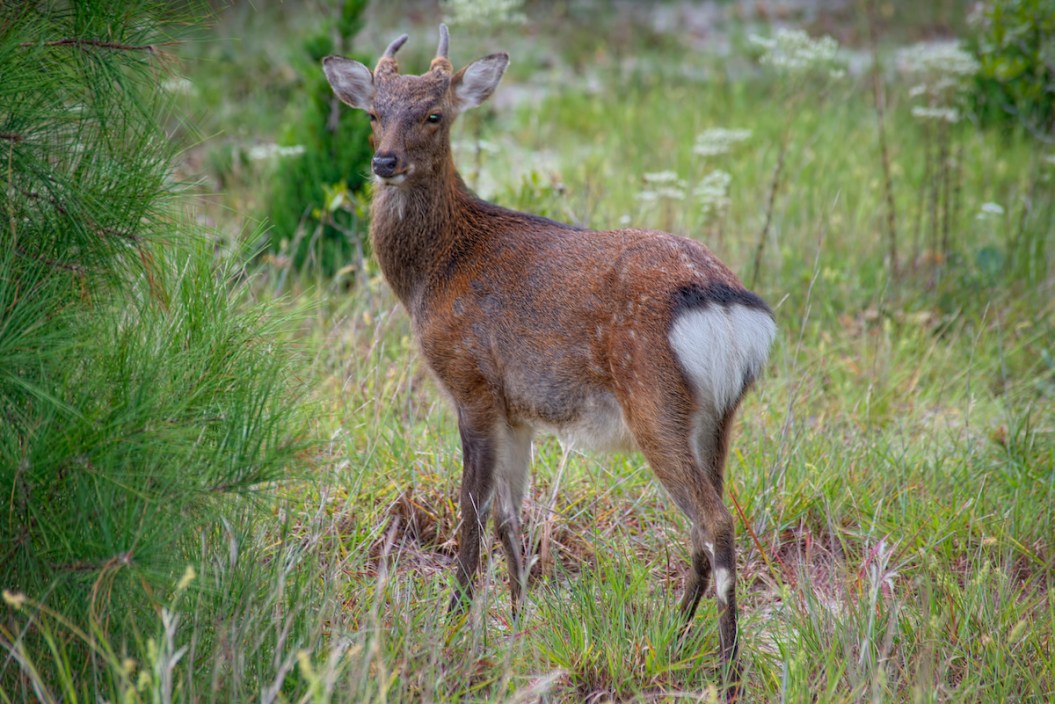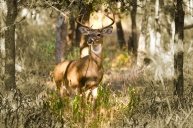When most people think of an exotic hunting adventure, they likely picture a trip to a faraway place. Unless you step foot inside a high fence, there are few areas to hunt for non-native species in the continental U.S. Unless you venture to the eastern shore of Maryland. In Maryland, sika deer hunting is king. For it is here, in the Old Line State, that a small sika deer population has thrived for years. Originally native to Japan, these "miniature elk" have taken well to this part of the state's marshes and wetlands. And there is enough there for there to be a sika deer hunting season. What's even more remarkable is the public land opportunities for these animals. However, killing one is no easy feat. Read on to learn more about the unique opportunity of Maryland sika deer hunting.
How Did Sika Deer Get to Maryland?
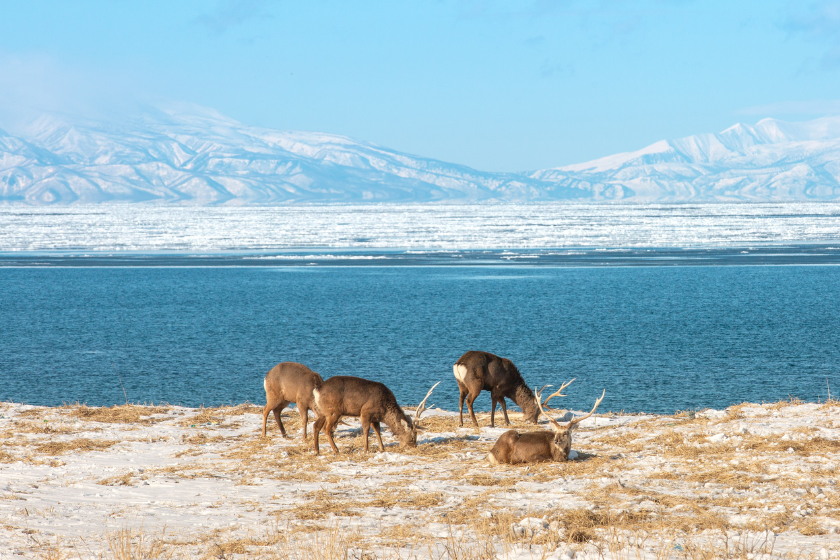
Lea Scaddan via Getty Images
Maryland's sika deer herds have remained in relative obscurity until recent years, when their popularity has exploded. We believe you can thank the rise of YouTube hunting shows and appearances on "MeatEater" at least partially for that. According to the Maryland Department of Natural Resources, these animals were first introduced to the state when they were released on James Island in 1916 by Clement Henry.
A few years later, people introduced more sikas to Assateague Island in the 1920s. The animals thrived, and today they inhabit all the eastern shore counties. However, Dorchester County has the highest concentration. It didn't take long for biologists and the DNR to implement a hunting season for these elusive little guys. They were mainly worried about sika deer populations expanding and competing with native whitetail deer. Thanks to generous bag limits and careful management, it seems they have managed to keep the population isolated in those counties.
Don't worry about confusing a sika with a whitetail. Sika is a small deer species. We are talking about an animal that dresses in the 45 to 50-pound range for an average adult female or young male. Older males might tip the scales at 100 pounds dressed, but that's uncommon. The males have small, branched antlers that look like elk antlers. For many hunters, any sika stag is considered a shooter. Forks and six-pointers are almost always shooters. Anything larger than that is usually considered a once-in-a-lifetime animal.
How Much To Hunt Sika Deer in Maryland?
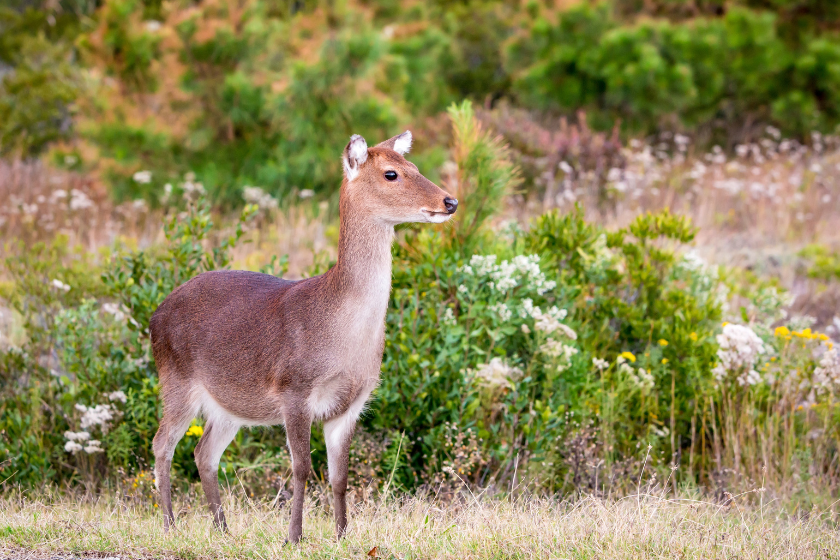
Mary Swift via Getty Images
The cool thing about sika deer is that the seasons are nearly identical to those for whitetail deer hunting. So you can hunt both species simultaneously if you find an area that concentrates both. The season splits into three sections, each with different date ranges:
- Archery hunting (Sept. 10-Oct. 20, Oct. 24-Nov. 26, Dec. 13-Dec. 17, Jan. 2-Jan. 6, Jan. 10-Jan. 31)
- Muzzleloader (Oct. 21-23, Dec. 18-Jan. 1.) & antlerless only (Oct. 25-Oct. 30 in Region B)
- Firearms (Nov. 27-Dec. 11, Jan. 7-Jan. 9)
As for licenses, you will need a Maryland hunting license. Thankfully, it's a highly affordable hunt. The charge is $20 for residents and $130 for non-residents. You will also need an archery, muzzleloader, or bonus antlered deer stamp. The cost for these stamps is $6 for residents and $25 for non-residents. Some public hunting areas may have additional required permits and fees. Still, just factoring in license costs, this is one of the more affordable out-of-state deer seasons in which one can participate in the eastern U.S.
The bag limits are also generous, allowing the harvest of up to three animals. Only one can be antlered. You shouldn't expect to stack them up-these deer are more challenging to hunt than whitetails.
Where Are Sika Deer in Maryland?

Joesboy via Getty Images
Yes, there are several options for a DIY-style hunt for these elusive little deer. The two most notable ones are in Dorchester County. There is the Taylor's Island Wildlife Management Area, which is roughly 1,000 acres. Then there is the Fishing Bay Wildlife Management Area, around 20,000 acres. These areas receive a ton of hunting pressure, so factor that into your strategy when selecting a location. Two more options include the Blackwater National Wildlife Refuge and the Assateague Island National Seashore. These areas often require additional permits and have regulations varying slightly from the usual state regulations. You should contact these areas if you are considering a hunt there for more information.
How to Hunt Sika
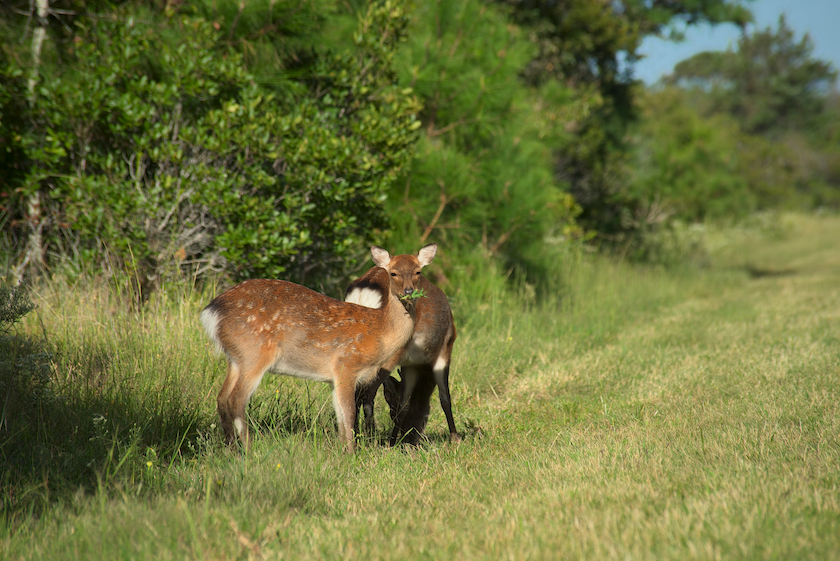
Joesboy via Getty Images
Sikas look unique and produce venison with a wildly different taste than you might be used to with whitetails. No wonder hunters get excited to try their hand at the rare breed. However, the hunt quickly humbles many of them-these animals are difficult to harvest.
Remember what we said about sikas? They only stand about two and a half feet tall at the shoulder. They like to inhabit marshy areas with tons of cover and are challenging to spot. In many cases, you are better off listening to the sound of them running through the standing water. Because of the swampy areas these deer like to live in, most hunters prefer to use treestands. In most scenarios, spot and stalking can be tricky, if not impossible.
Sika deer are also notoriously difficult to scout and pattern because they are wanderers that cover gobs of ground in a day. When biologists tracked Maryland sika deer movements in 1988, they found stags averaged 2.7 miles per day. (Sika females traveled 1.3 miles.) Biologists also determined Dorchester County sika stags often held home ranges over 500 acres!
Your best bet is to figure out where they are bedding and try to find trails feeding in and out of these spots. These deer are less willing to come into the open than a whitetail is, which adds to the challenge. Keep an eye out for phragmites, a type of reed grass. Sikas love using them for cover. Stand setups on the edges of these reeds are effective.
There is one similarity to whitetail hunting. The rut is unquestionably the best time to pursue these animals because it's the most likely time a big stag will make a mistake. In Maryland, this usually happens mid-October, meaning most people are either bowhunters or use a muzzleloader. In any case, you'll know when the stags are close. For a small animal, their bugling is an unearthly scream that echoes through the woods and marshes for hundreds of yards like a bull elk in Colorado.
If you are uncertain about a stag hanging around the area, keep an eye out for their wallows. Sika stags like to mark their territory with scrapes. Smelling urine is a good sign the wallow is fresh. If you start hearing bugling, odds are a stag is in the area. Careful calling can bring aggressive stags looking to fight a rival.
Except for acorns, sika food sources are not the usual corn, soybeans, or other crops. Sikas like feeding on green gasses, mast, and poison ivy. The sikas will be nearby if you find an area with trails leading from a bedding area to these food sources.
Wherever you hunt, make sure to practice your shooting before you go. Remember, these animals make for a tiny target. You will probably have to thread the needle on a shot through some extremely thick cover. It helps to practice those hard shots on smaller targets before you go, especially with archery equipment.
Hiring an Outfitter

Joesboy via Getty Images
Because of the difficulty in hunting these animals, many people prefer to hire a guide to help them locate these sneaky animals in the vast marshy wilderness. Outfitters can also get you access to private lands you wouldn't be able to hunt otherwise. Many outfitters will also guide you on duck hunting. The areas favored by sika are close to the legendary waterfowl hunting in the Chesapeake Bay region. Some hunters like to make sika and waterfowl a combination trip.
The nice thing about hiring an outfitter is that the hunts are affordable. Most guides charge between $250-$350 a day, which is okay when you compare a search for these tiny elk look-alikes to a guided hunt for a Rocky Mountain bull elk somewhere in the west.
Maryland's sika deer herd offers a unique chance to take a non-native deer in an easily accessible setting. It may be one of the more challenging hunts you will ever go on, but it is also one of the most rewarding.
This article was originally published on January 17, 2022.
For more outdoor content from Travis Smola, follow him on Twitter and check out his Geocaching and Outdoors with Travis YouTube channels.
